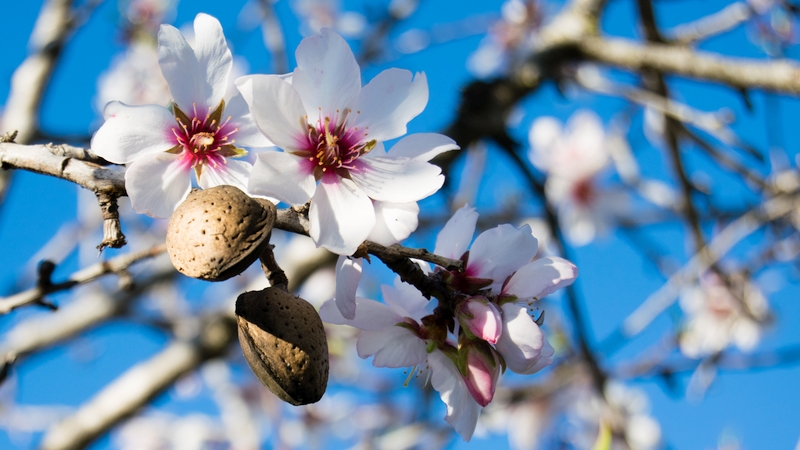Using Nematodes For Peach Pest Control
Peaches are a significant part of the South’s fresh produce industry. But since several insect pests pose serious threats to southern peach orchards, growers must often resort to chemical controls to protect their fruit.
At the USDA-Agricultural Research Service (ARS) Southeastern Fruit and Tree Nut Research Laboratory in Byron, GA, entomologists David Shapiro-Ilan and Ted Cottrell are seeking environmentally friendly alternatives. In cooperation with Russ Mizell at the University of Florida and Dan Horton at the University of Georgia, the ARS researchers are evaluating two tiny, soil-dwelling nematodes as possible biological controls.
Shapiro-Ilan and Cottrell found that soil applications of the nematode Steinernema riobrave can suppress plum curculio larvae by 78% to 100%. “Nonfeeding infective juvenile nematodes seek out larval hosts,” says Shapiro-Ilan. “Once inside, it releases a bacterium that multiplies rapidly and kills the host. The nematode then reproduces while feeding on the bacteria and insect tissues.”
Curbing Airborne Marauders
Stone fruits are also plagued by clear-winged moths such as the peachtree borer and the lesser peachtree borer. Another beneficial nematode, St. carpocapsae, is virulent to both closely related hosts.
With peachtree borers, field applications of the St. carpocapsae nematode achieved high levels of borer control. That’s in part because the nematodes were protected from desiccation (drying) and ultraviolet damage by their subsoil environment.
“We found that a single application of St. carpocapsae provided 88% suppression when applied to mature peachtree borer infestations in springtime,” says Cottrell. “And in a recent field trial, three applications of St. carpocapsae during the peachtree borer’s fall egg-laying season completely suppressed all damage.”
Though they knew from lab studies that the lesser peachtree borer is also highly susceptible to St. carpocapsae, Shapiro-Ilan and Cottrell realized that its control would be more difficult. That’s because lesser peachtree borers attack trees aboveground, feeding in galleries within trunks and limbs.
“Initially, we just applied nematodes to lesser peachtree borer wounds, and — as expected — the nematodes failed to cause any significant suppression,” says Shapiro-Ilan. But the researchers then found that when nematodes were given adequate protection, they provided a high level of borer control.
To achieve that protection, they applied St. carpocapsae nematodes to tree wounds and then covered the wounds with moisture-holding bandages. “In our first trial,” says Cottrell, “we saw 100% borer suppression just five days after treatment.”









